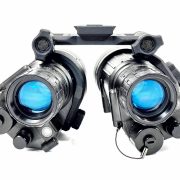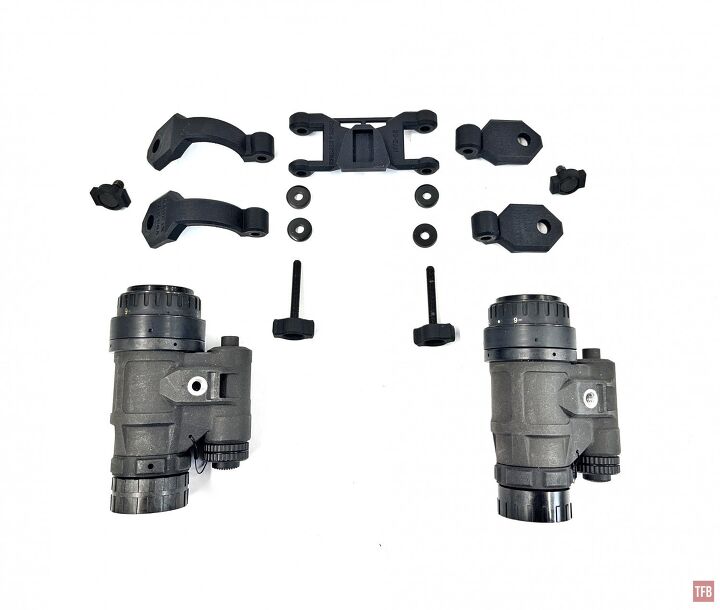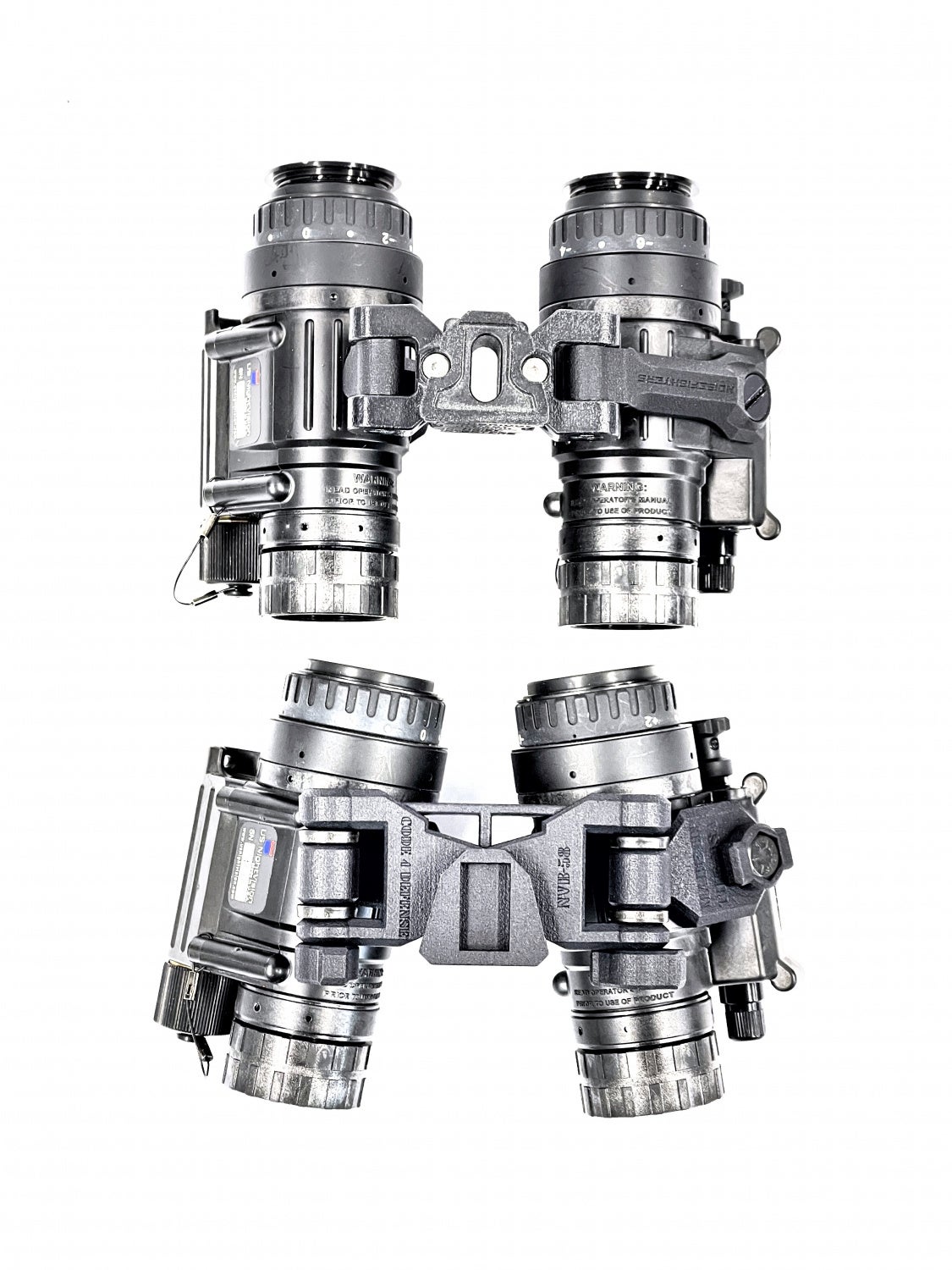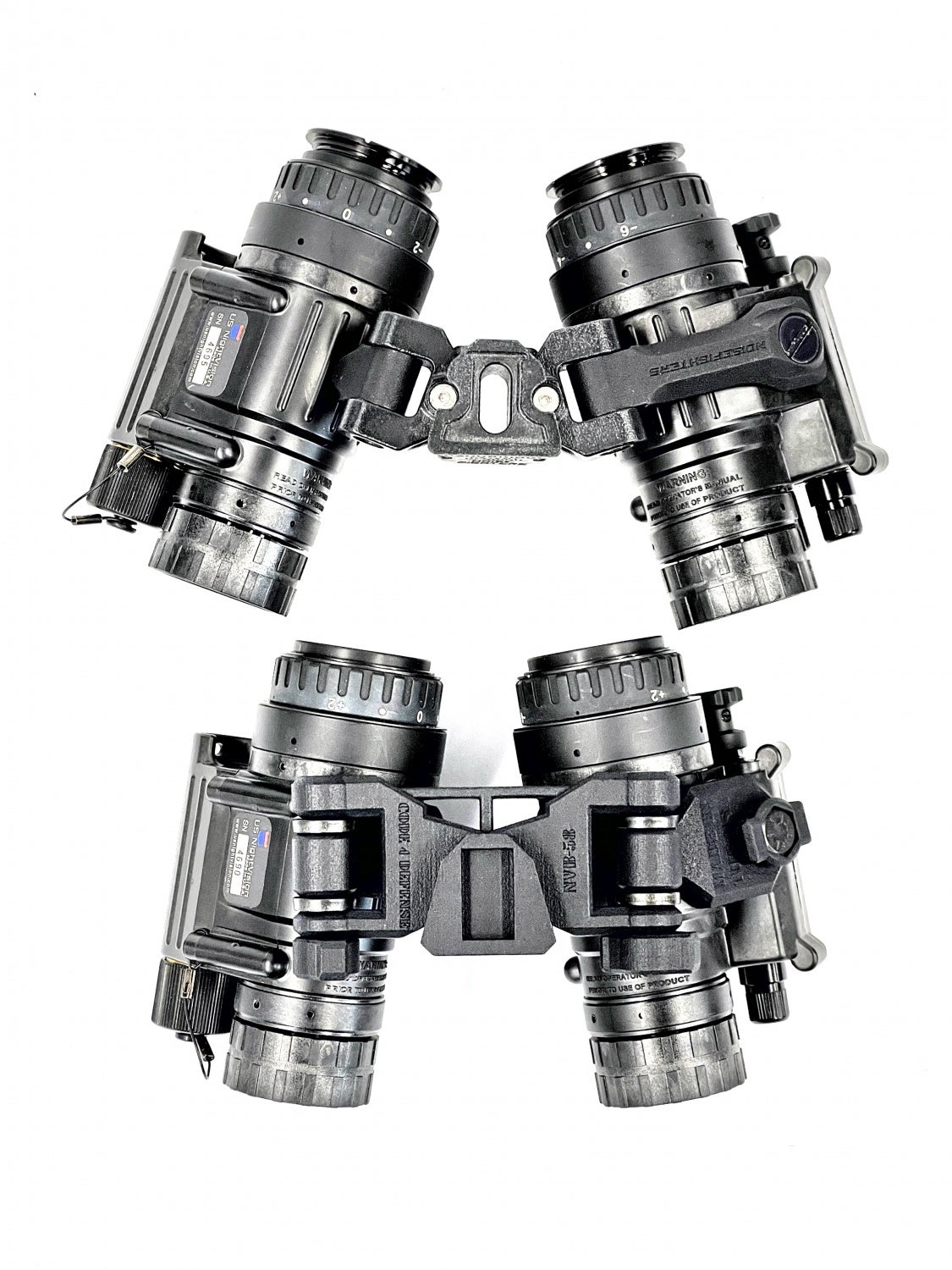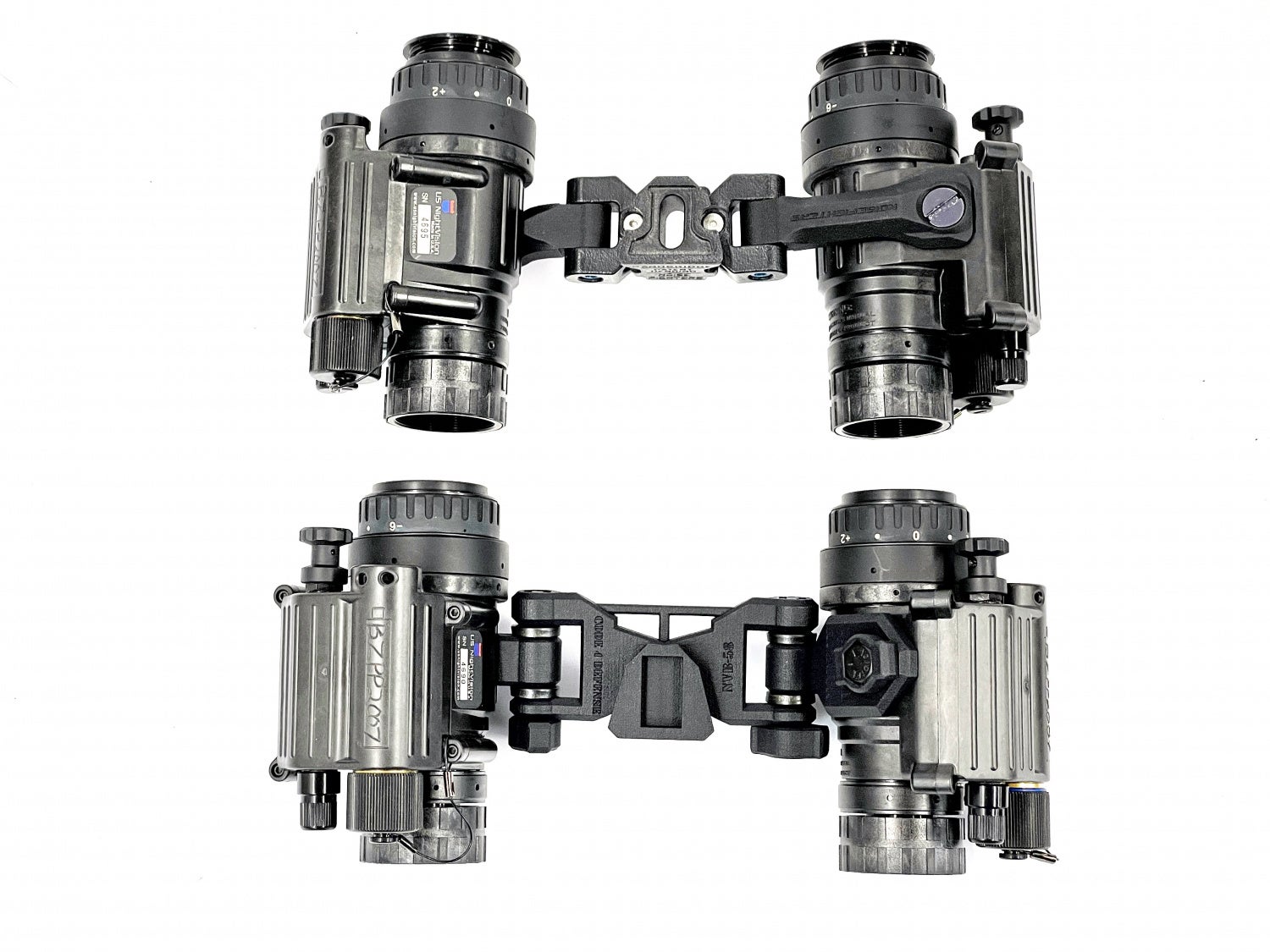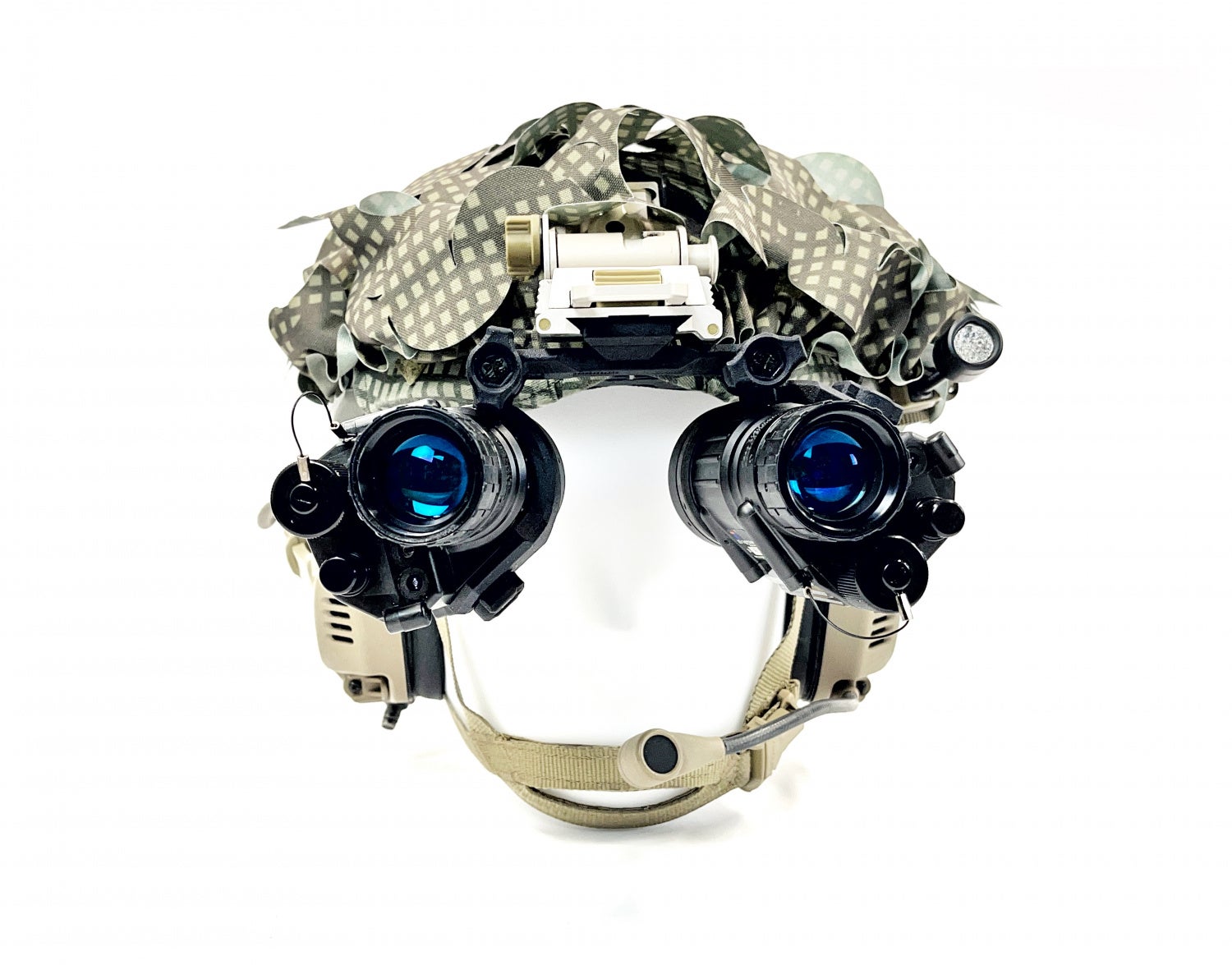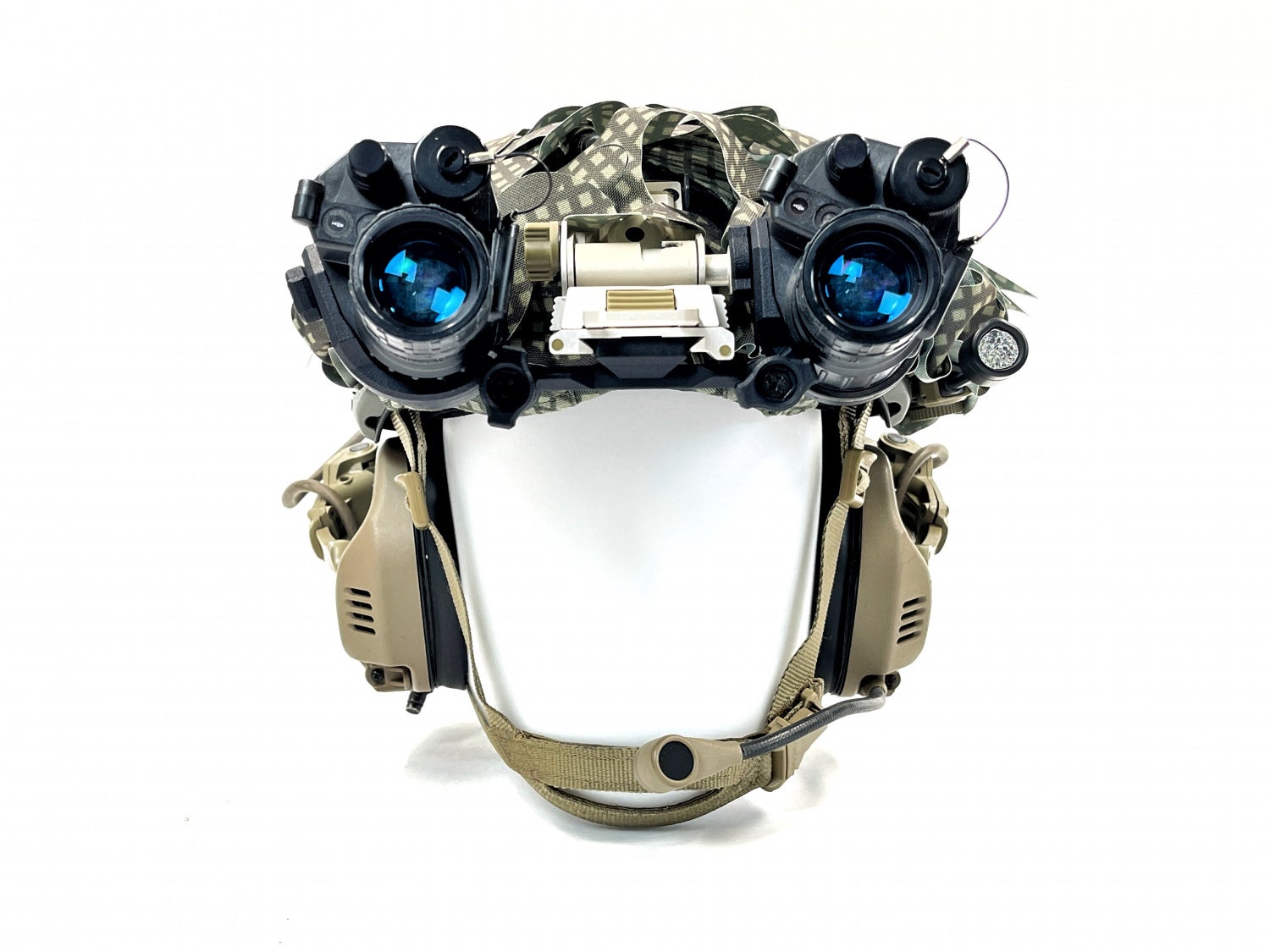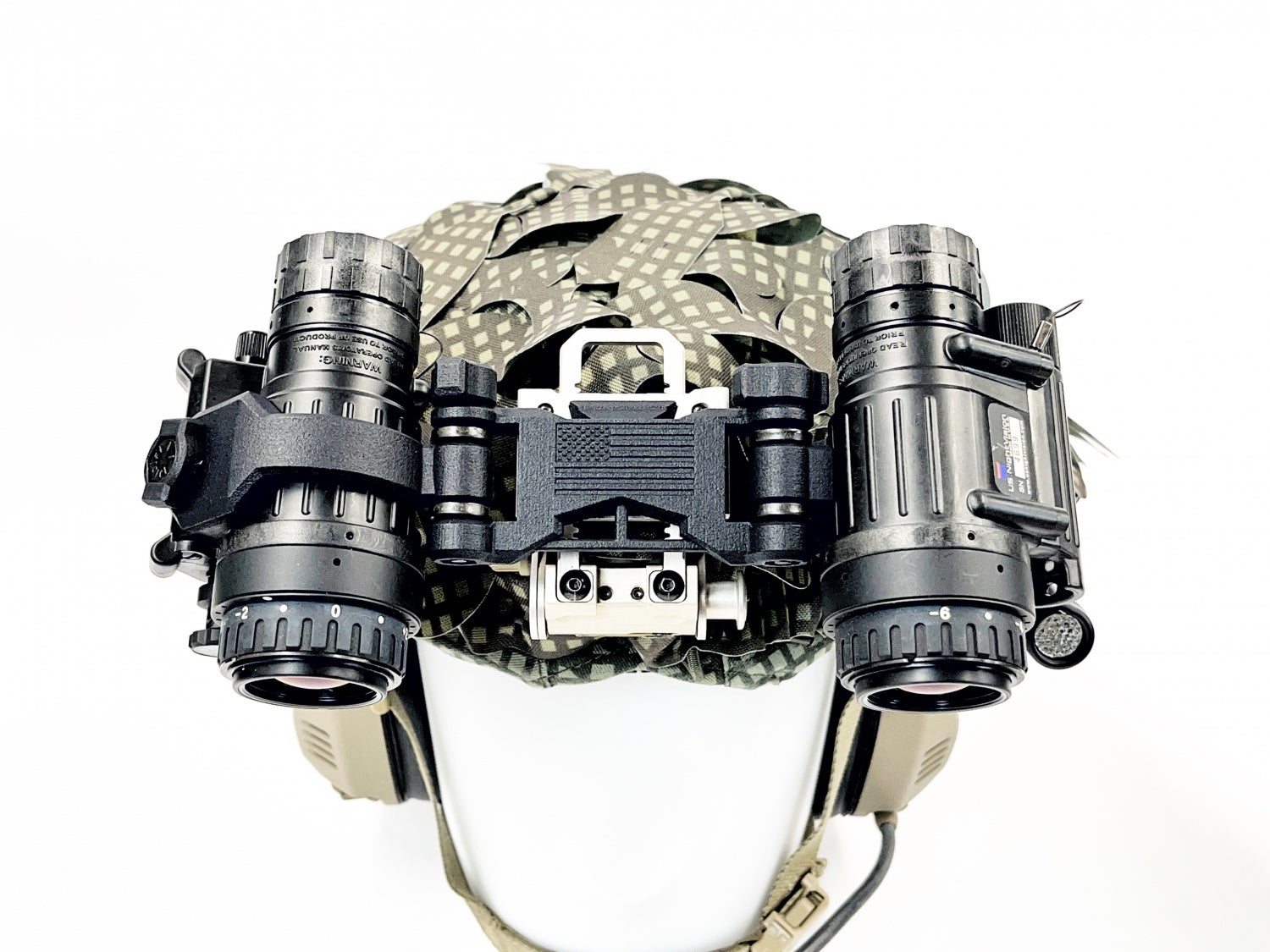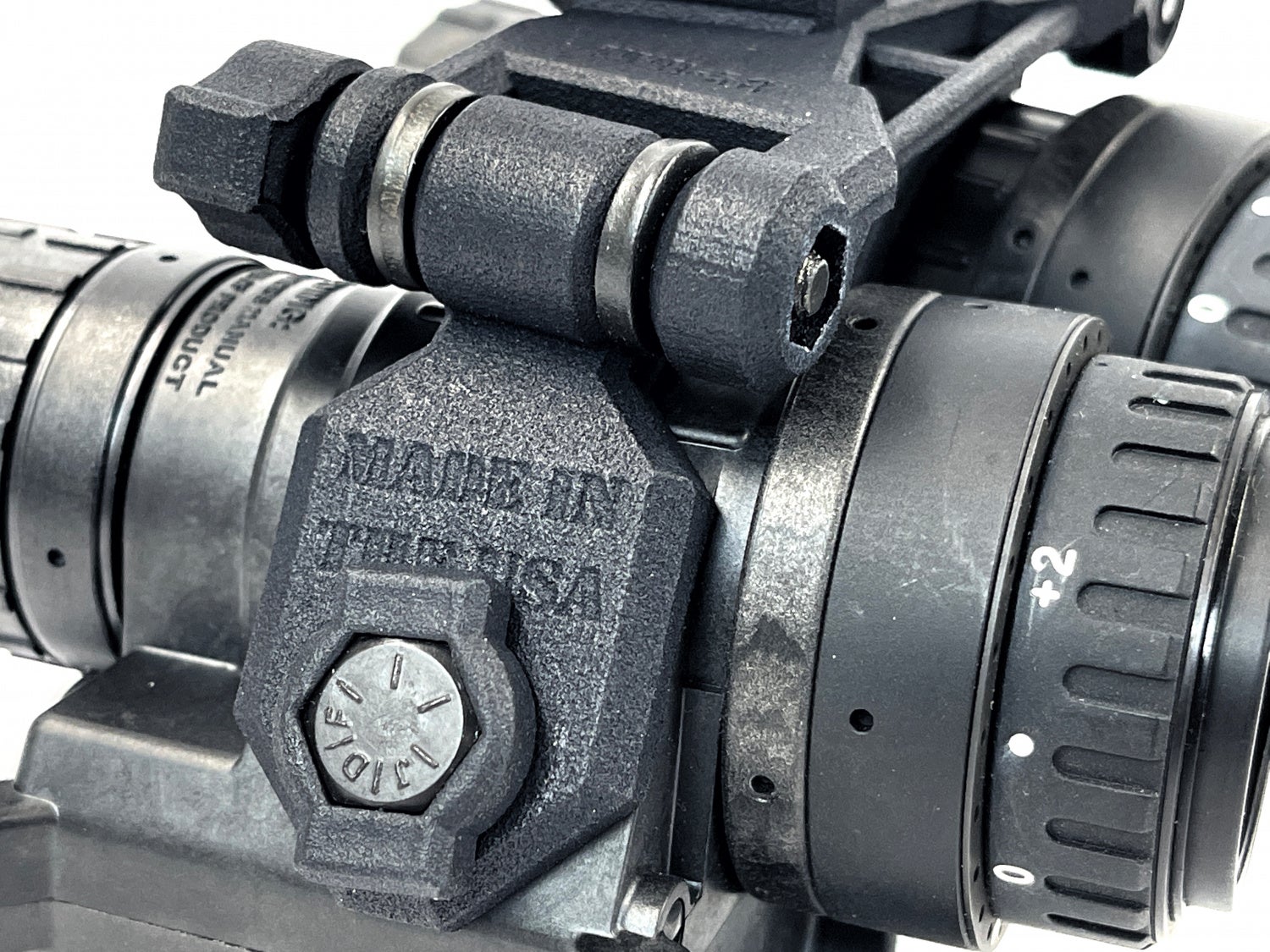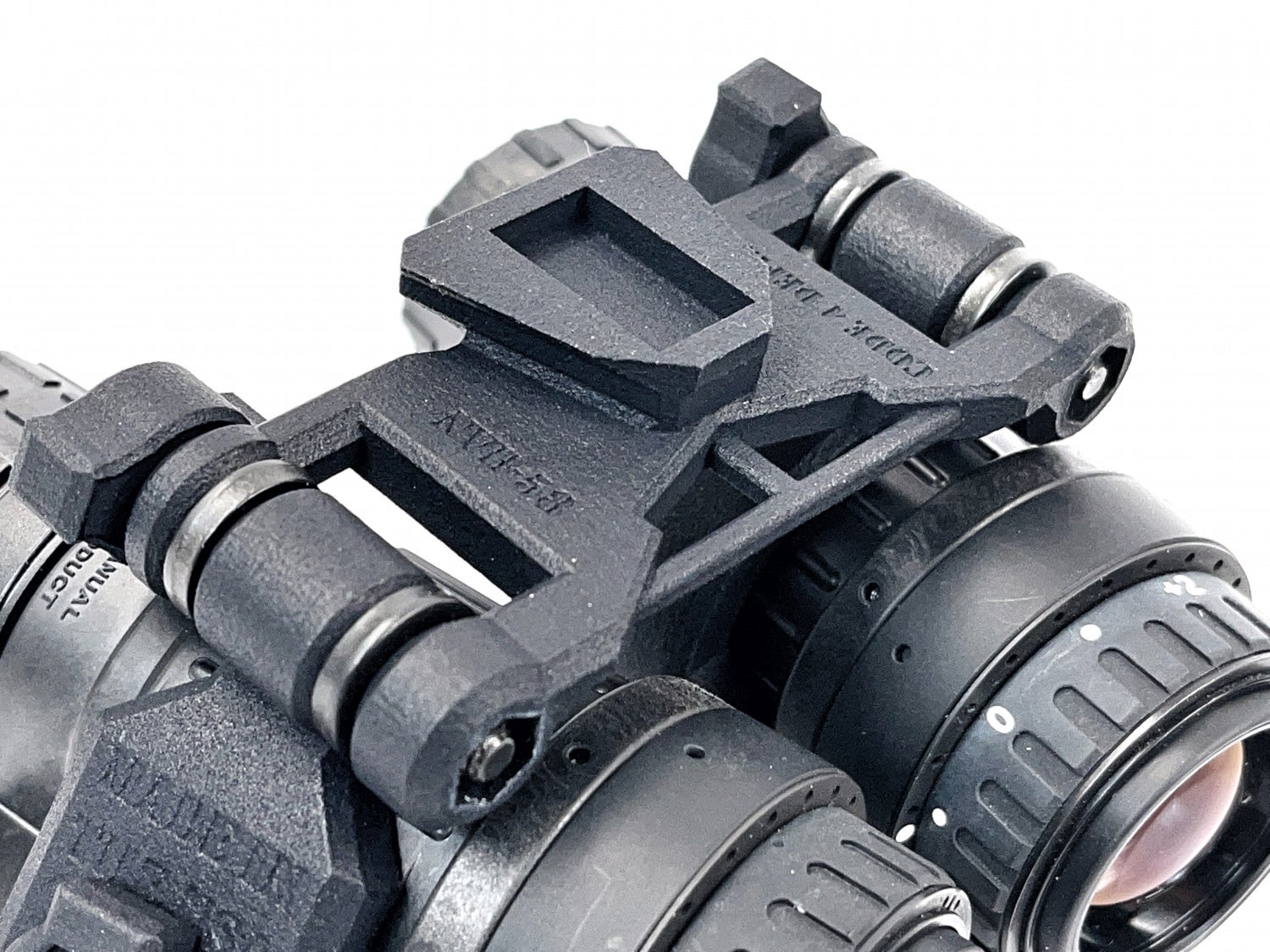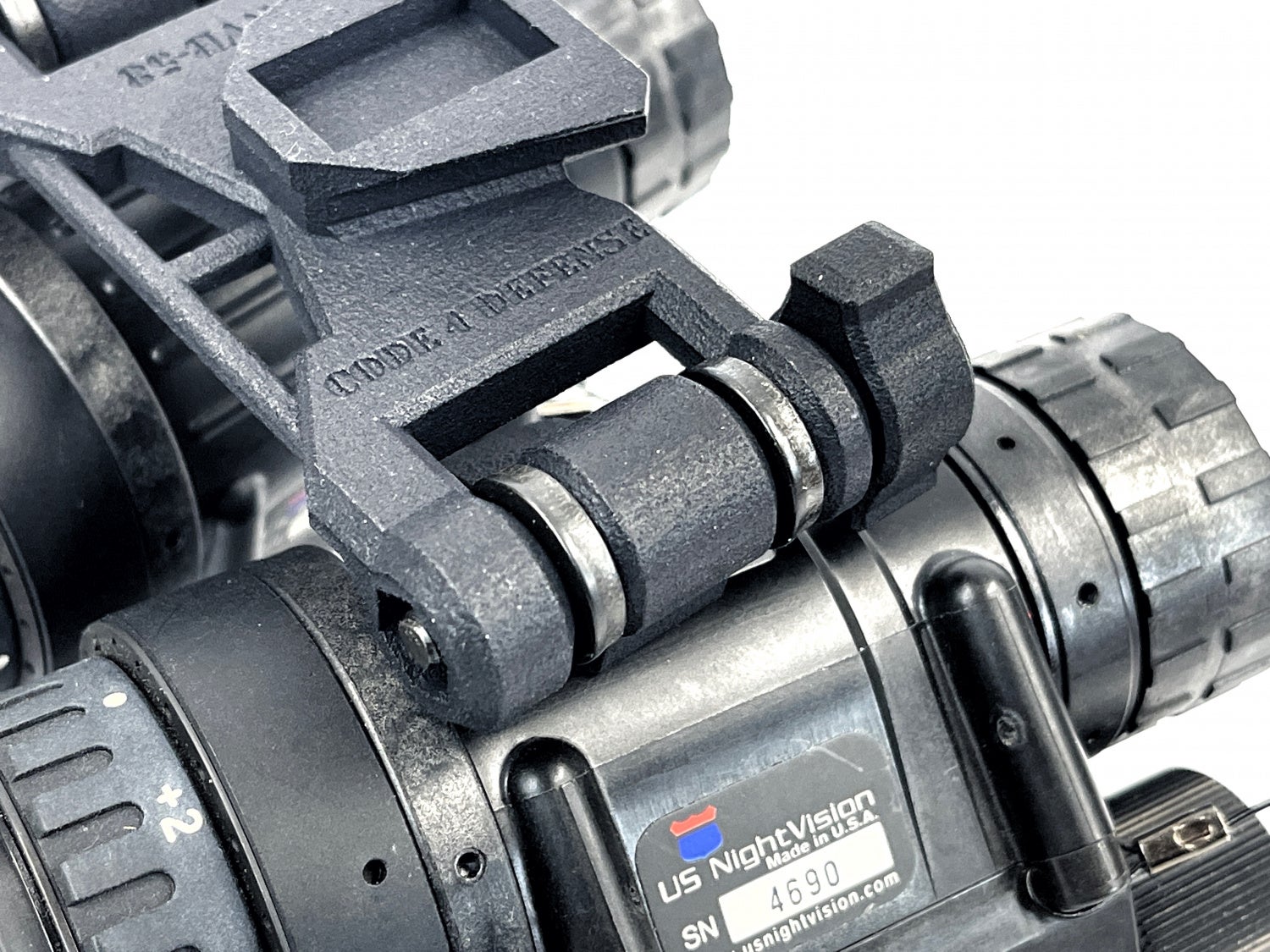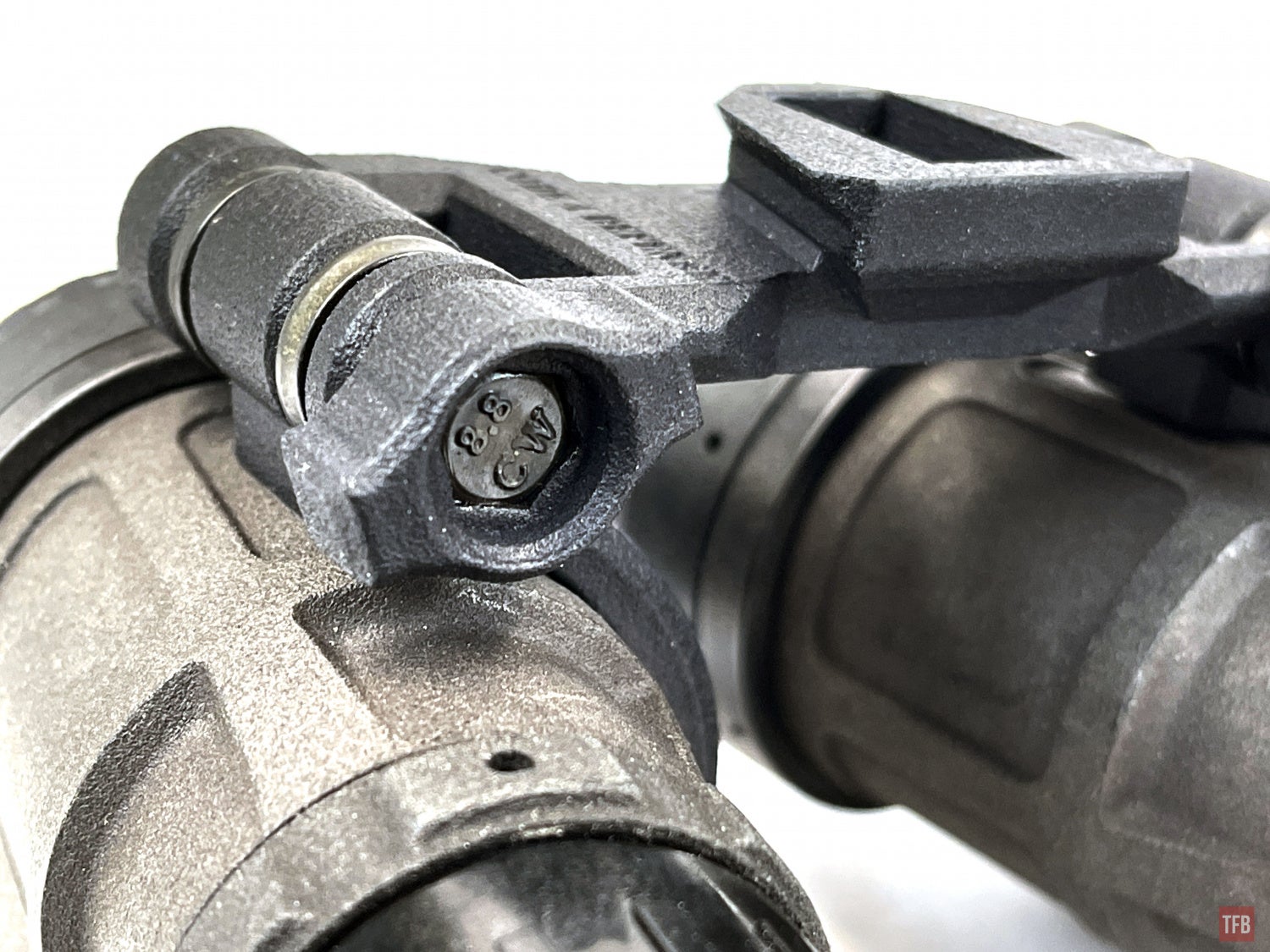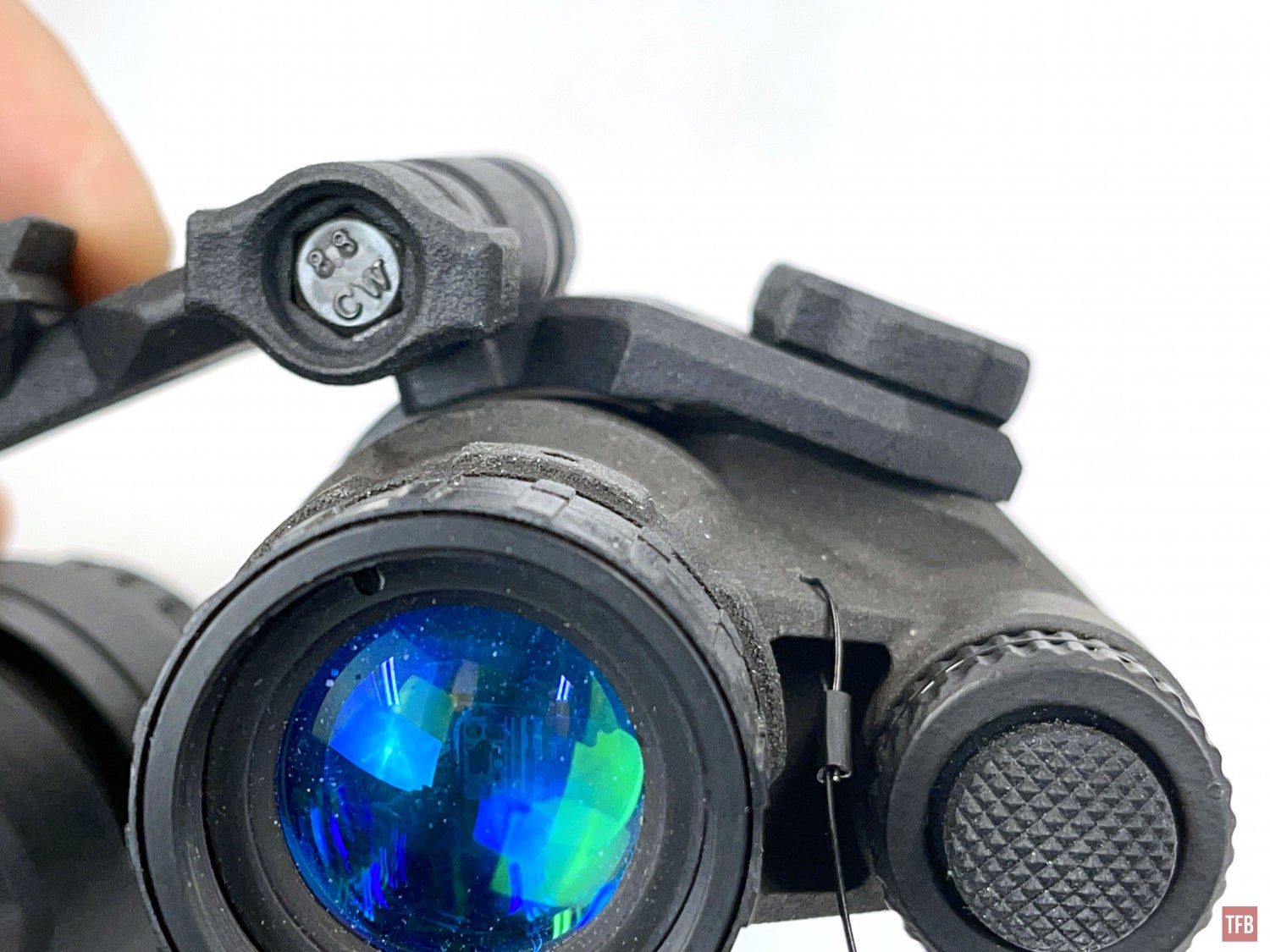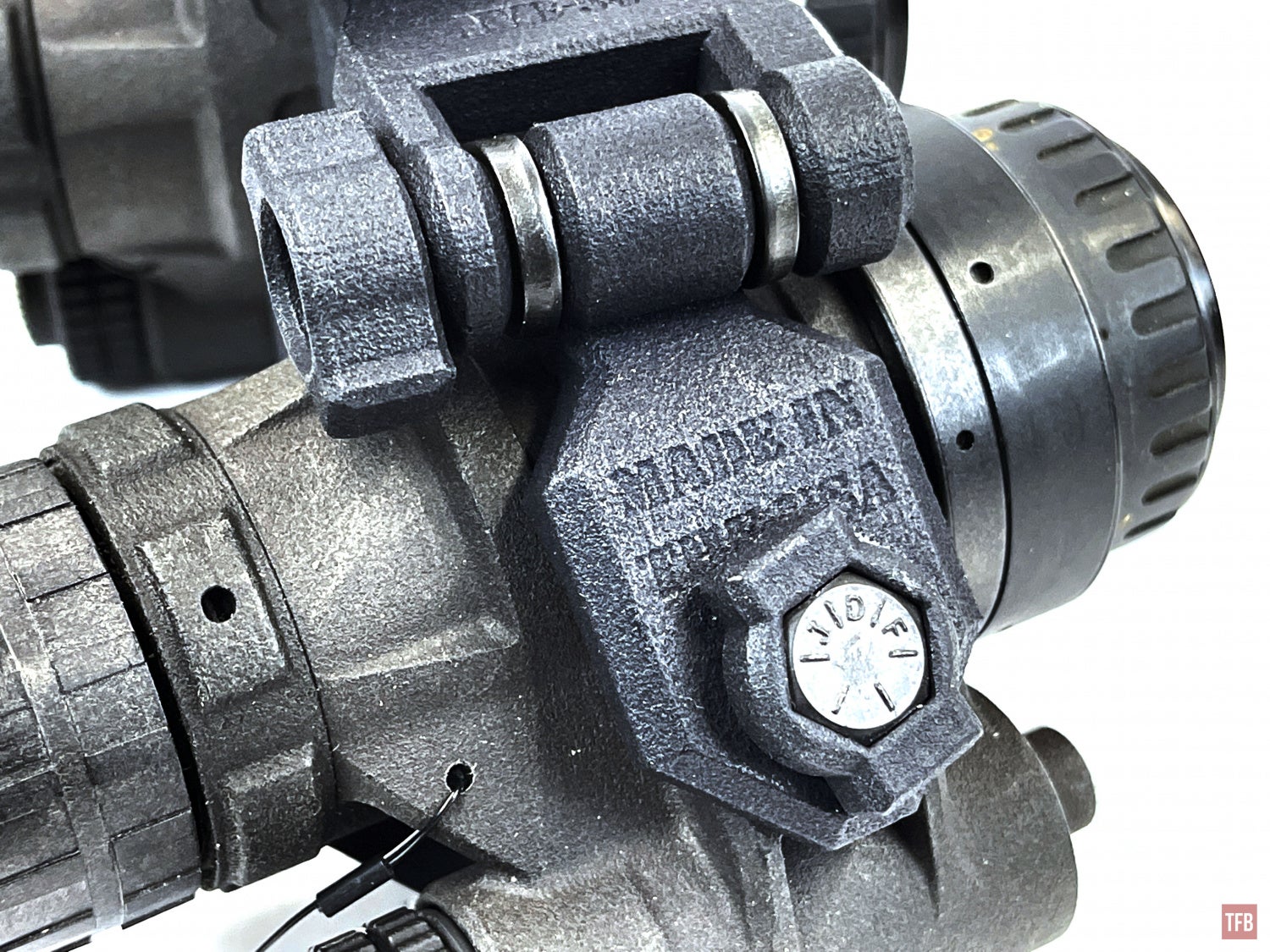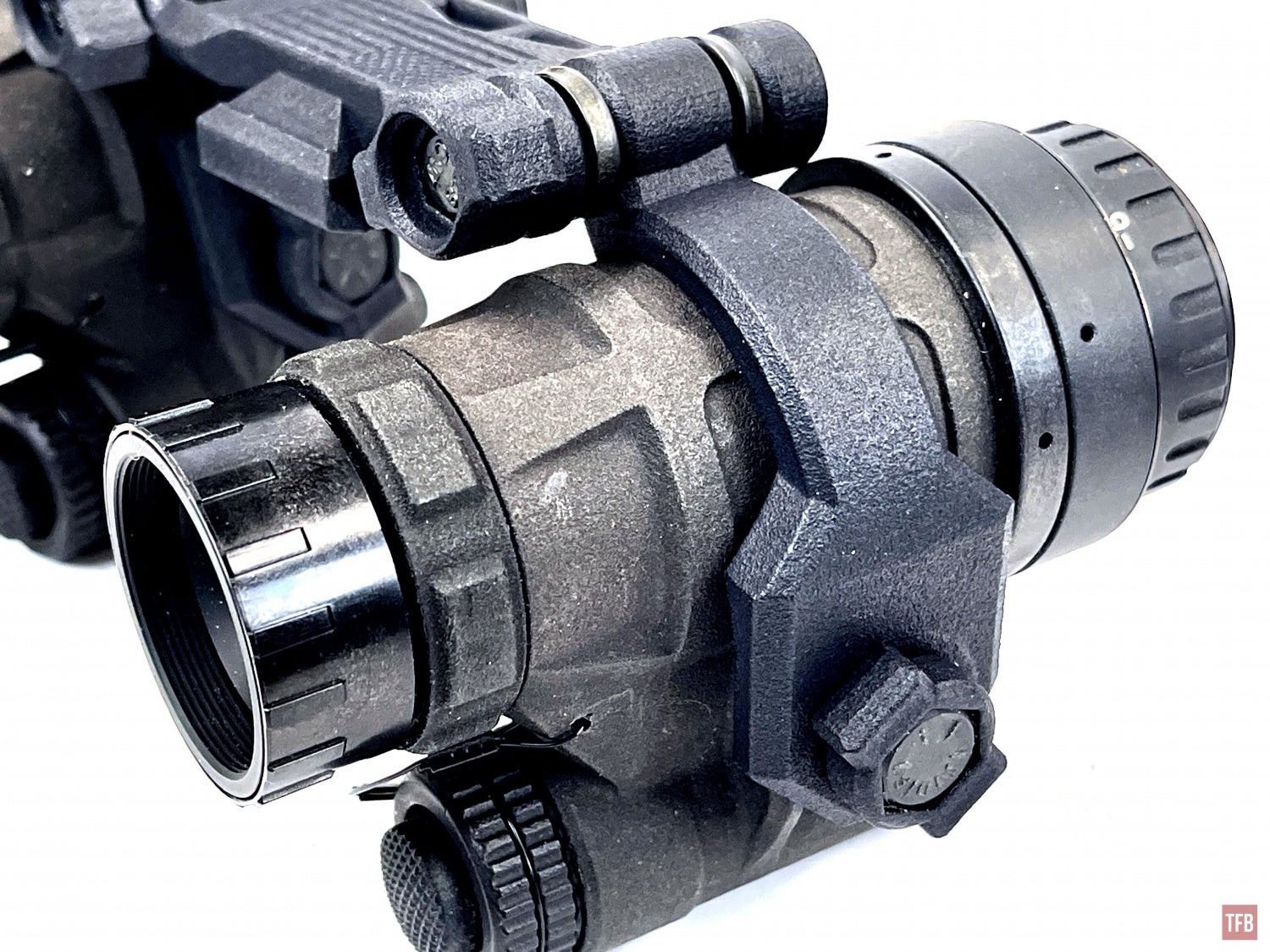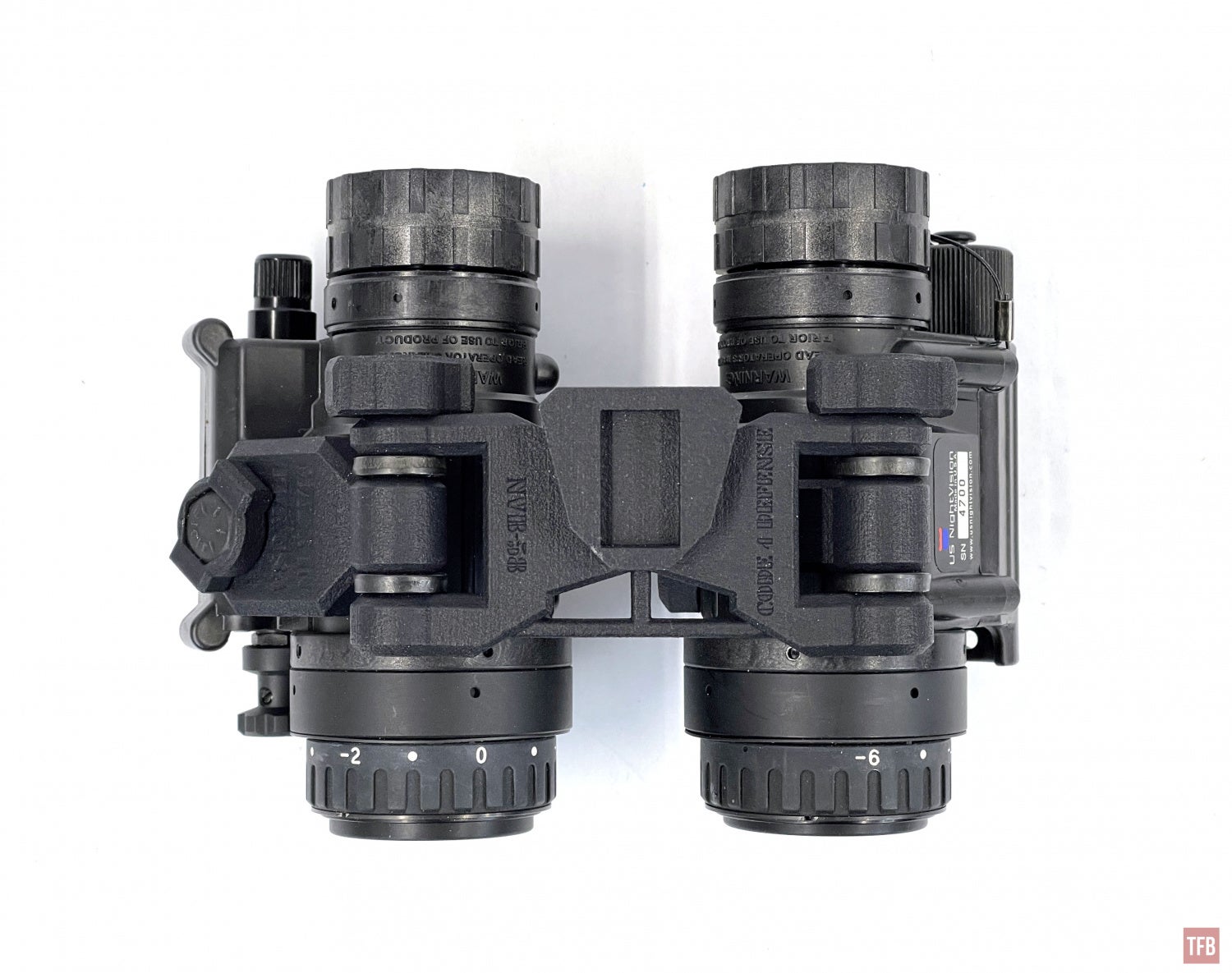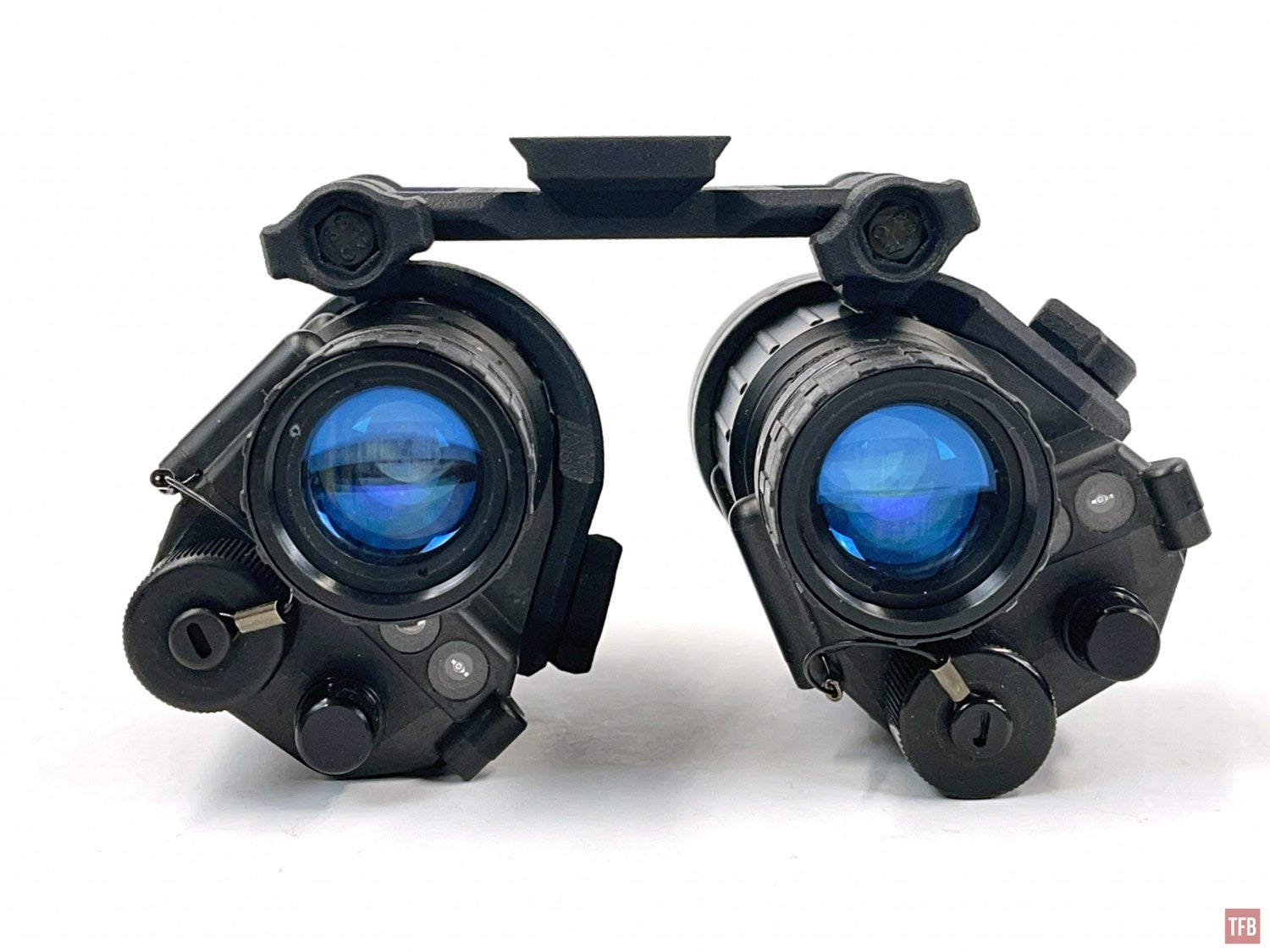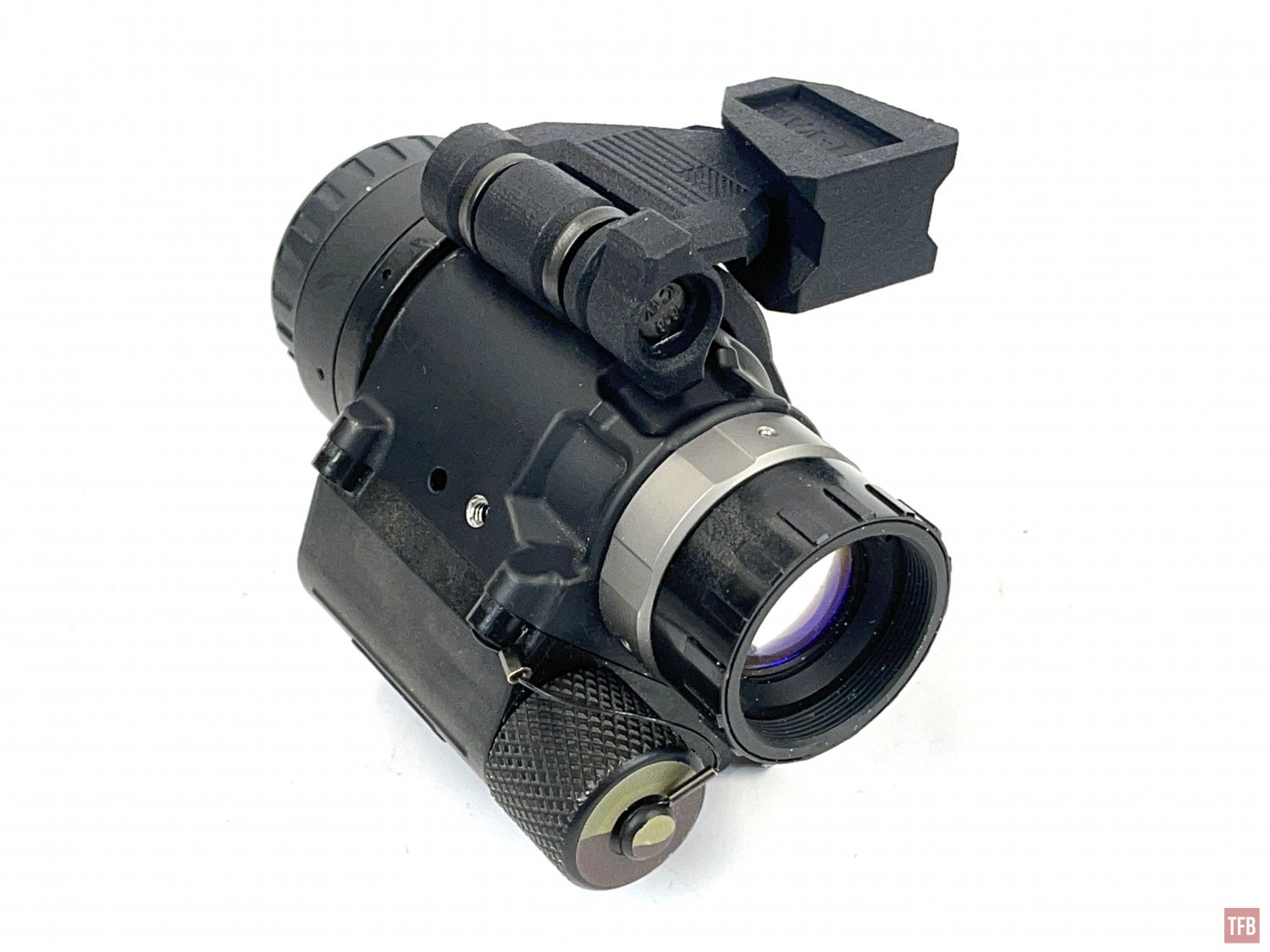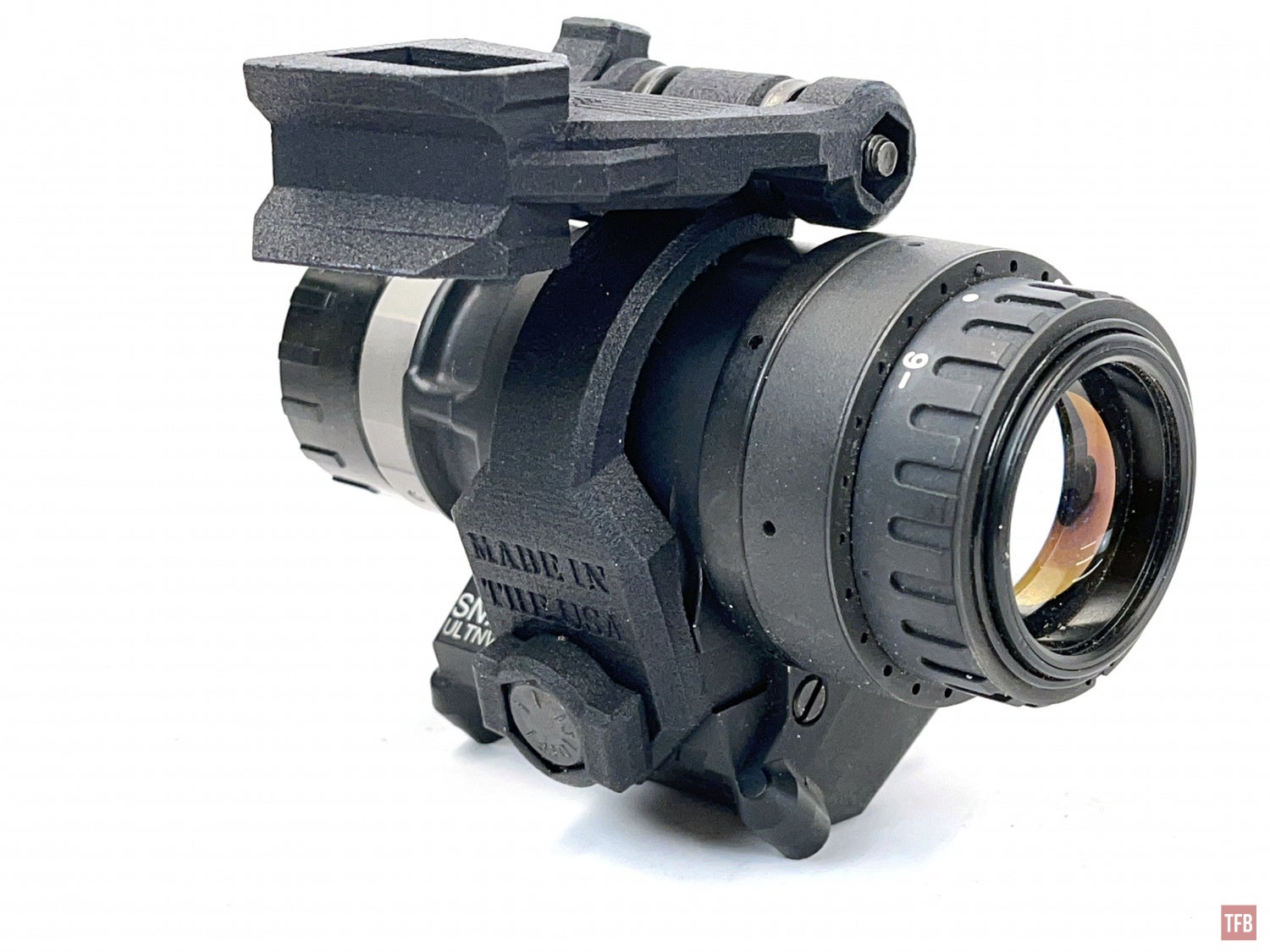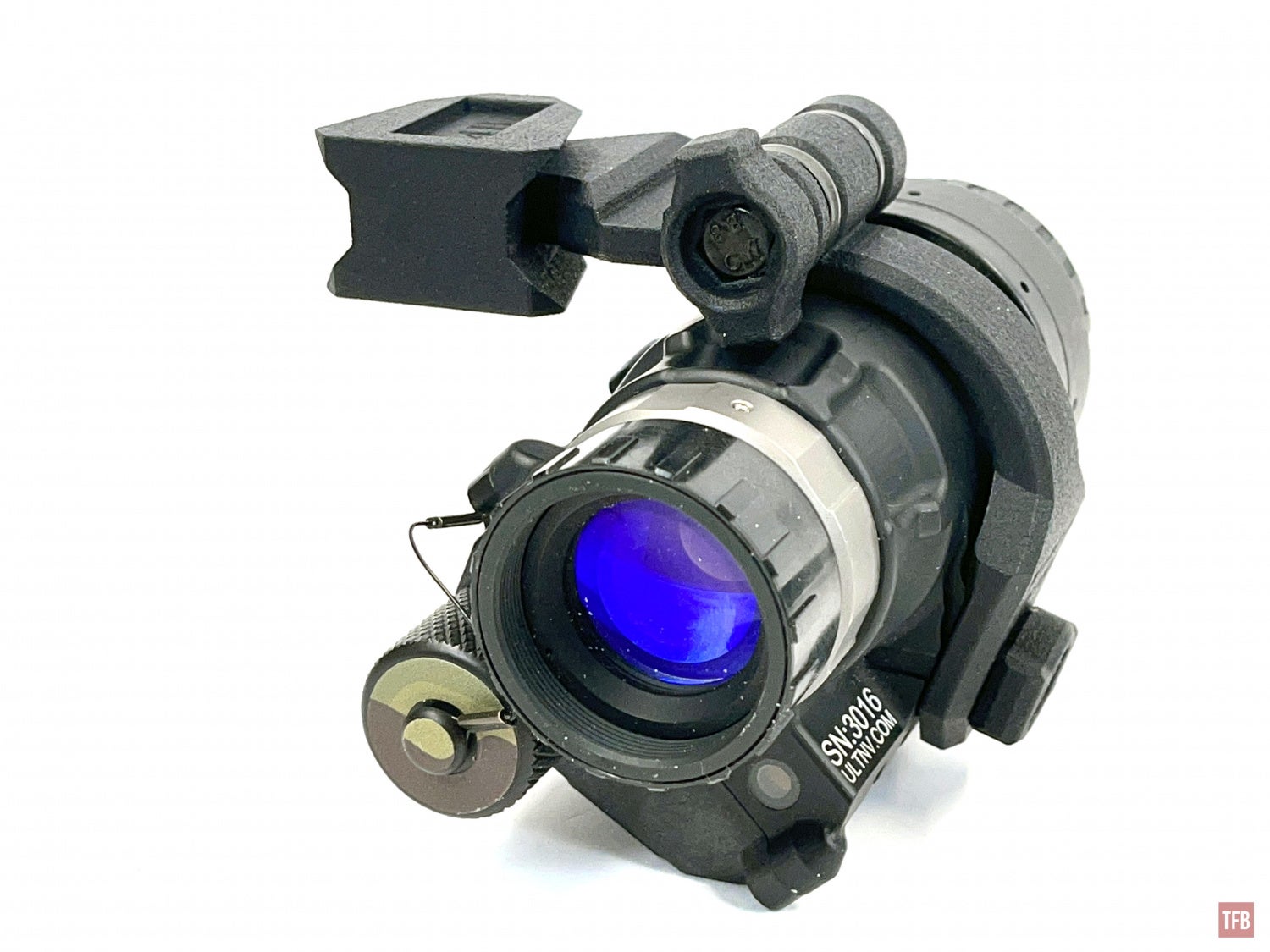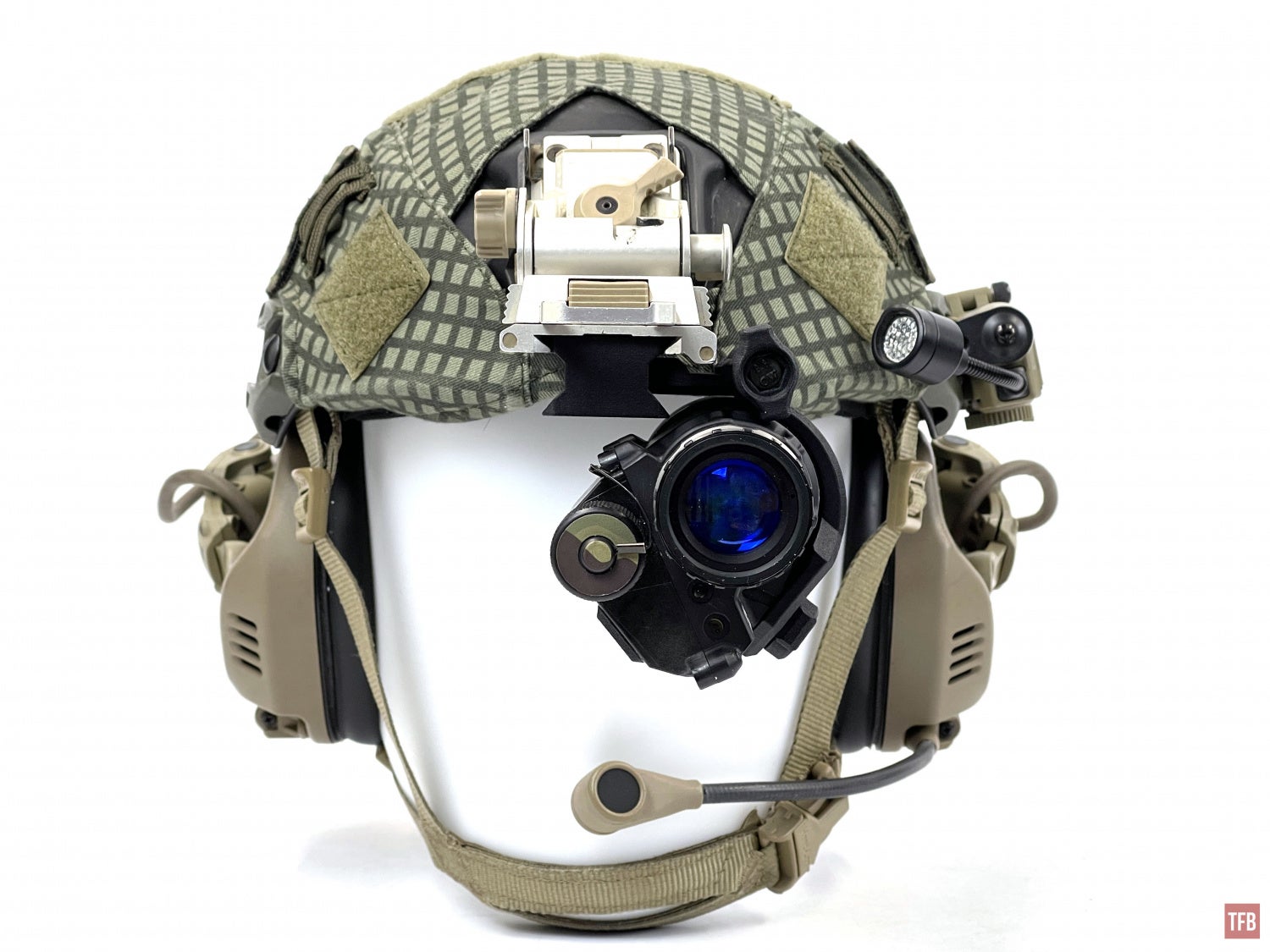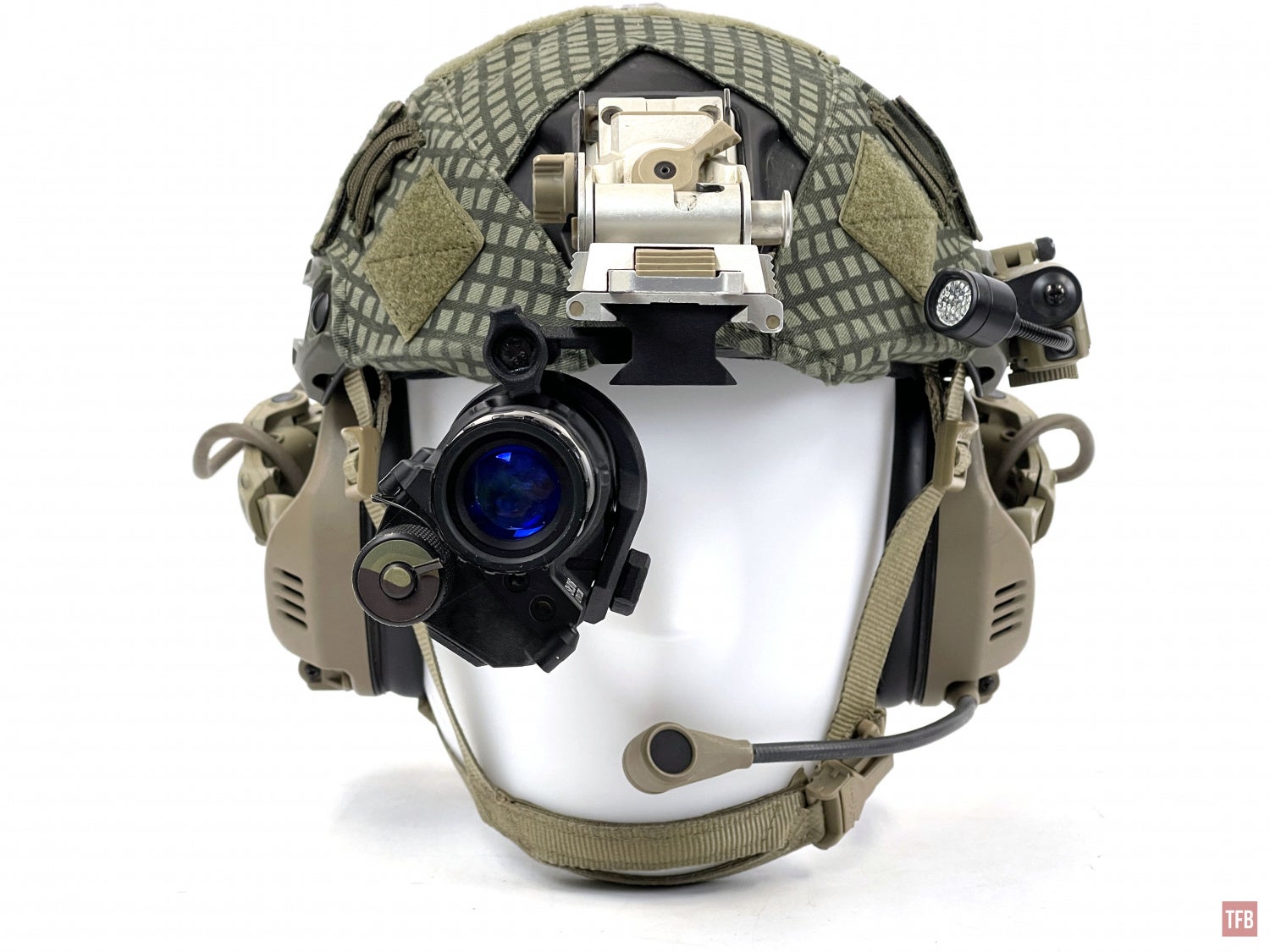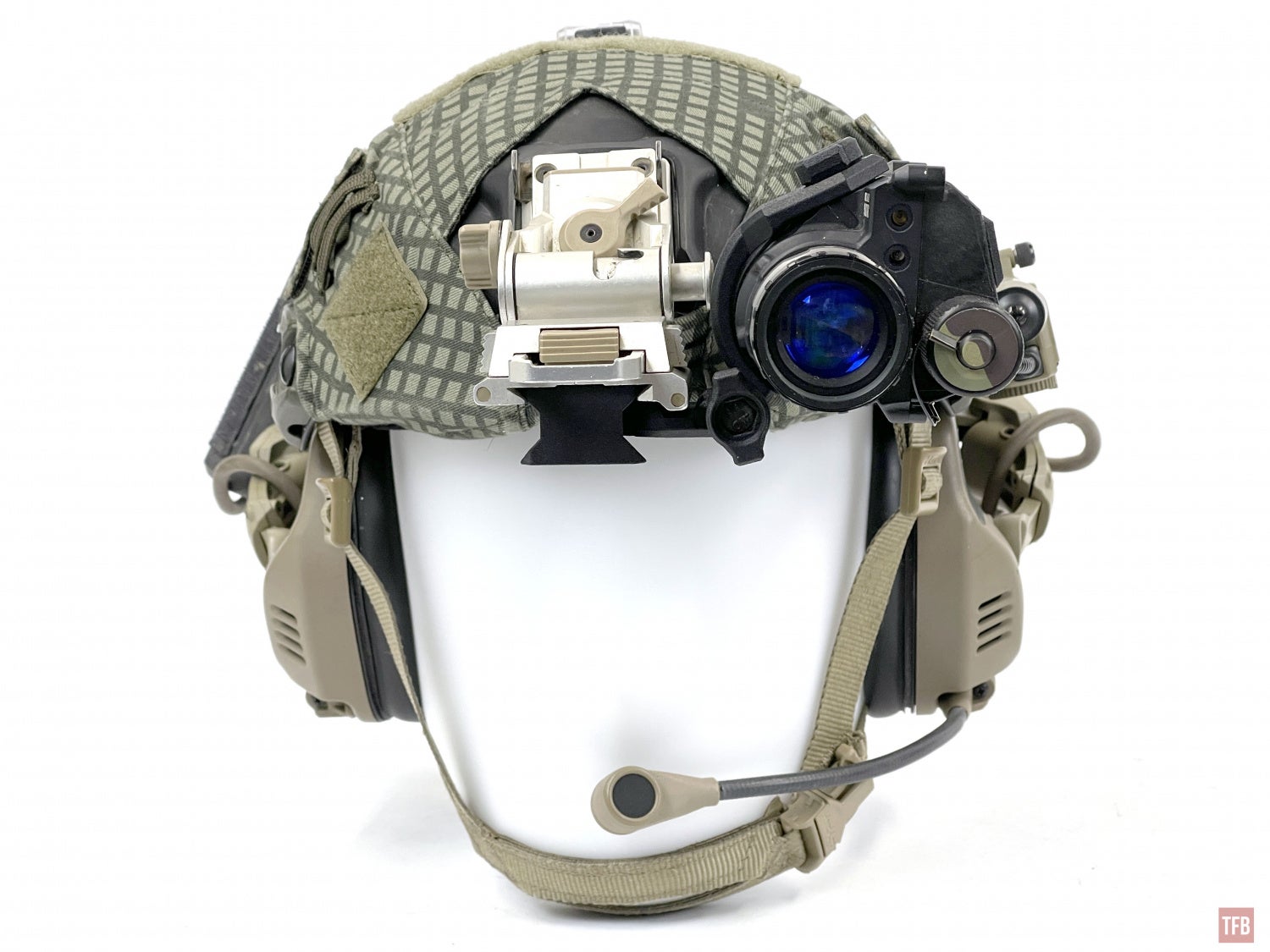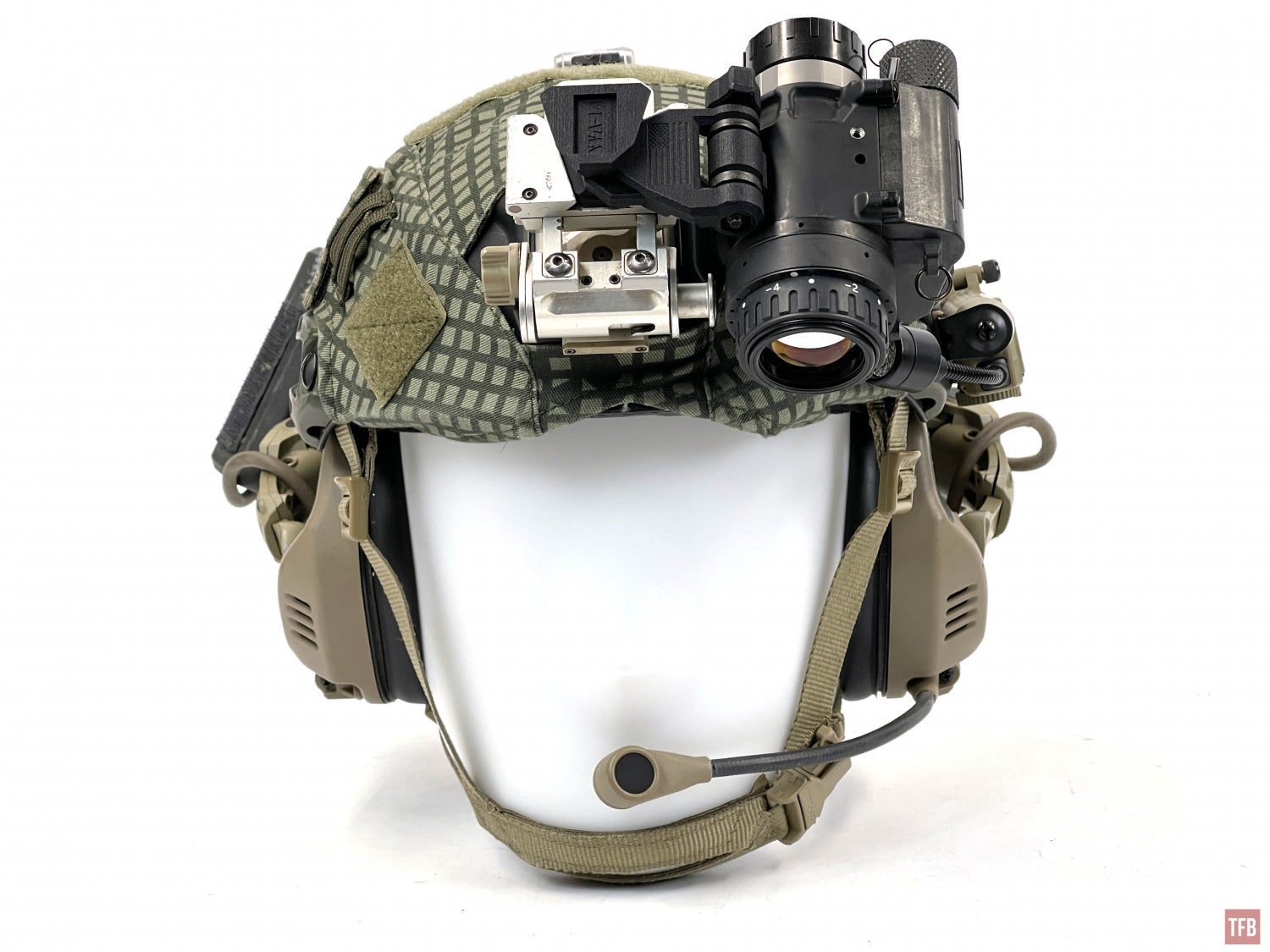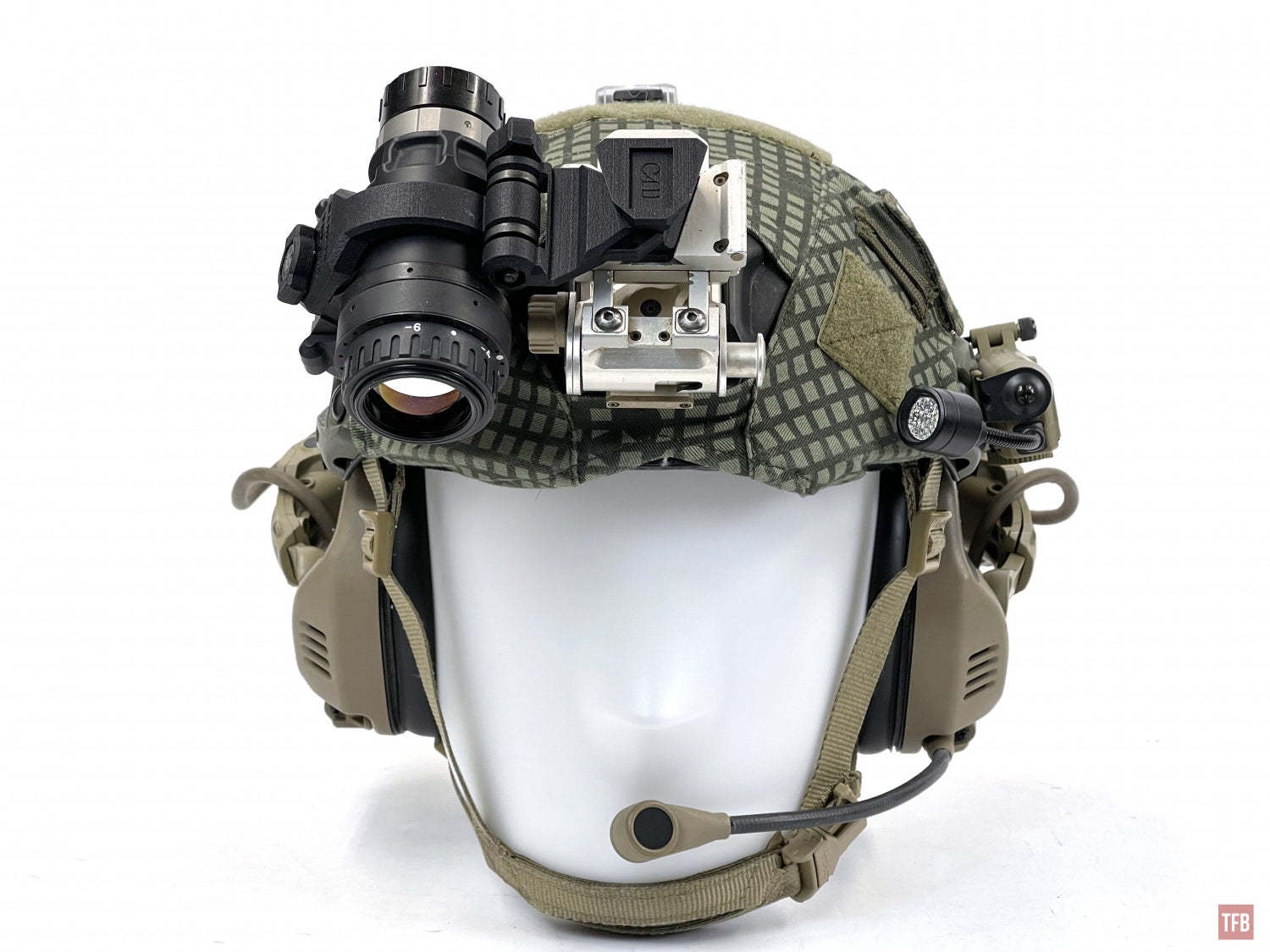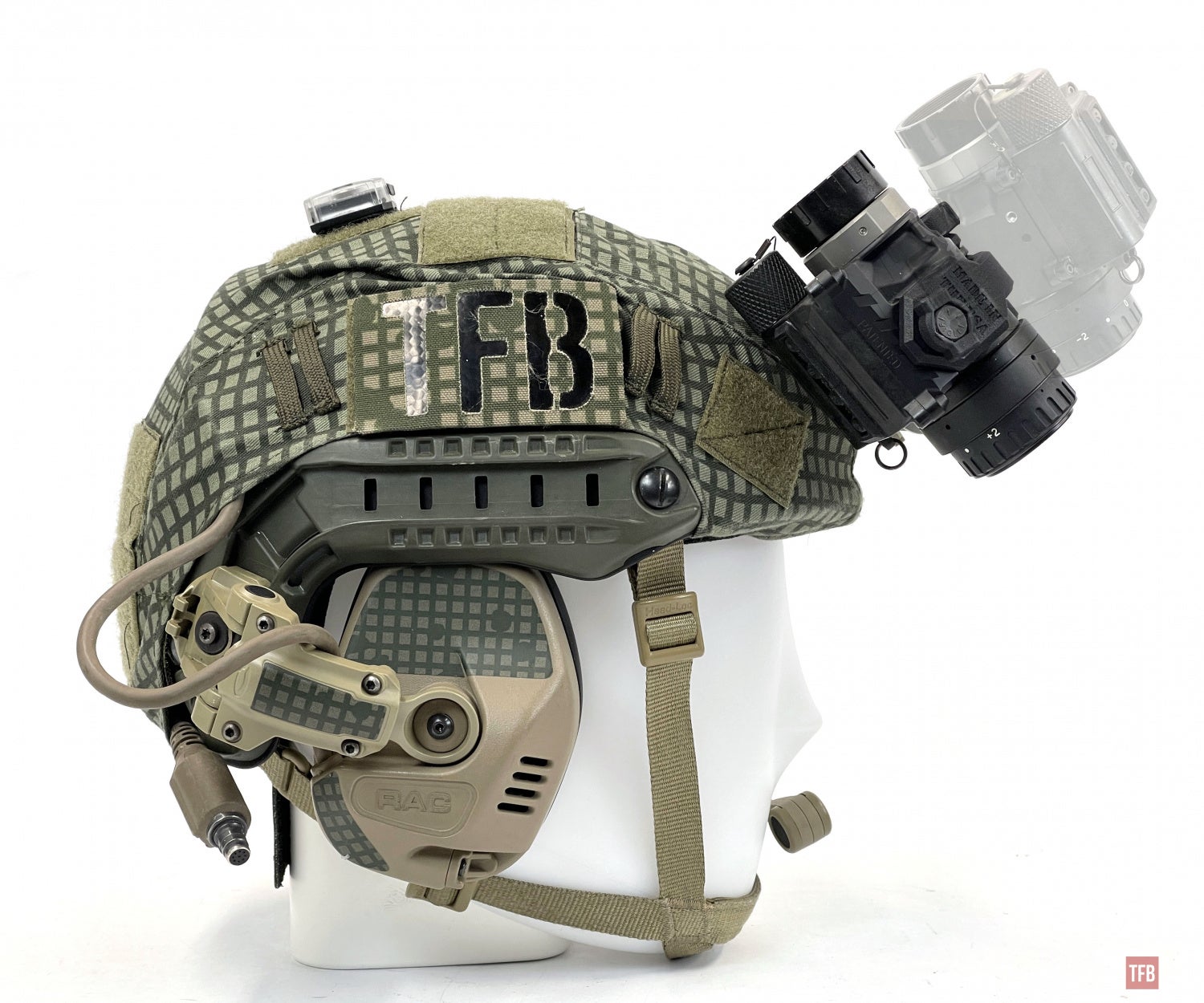Welcome back to another weekly installment of Friday Night Lights. Last week we talked about my custom PP-NVG. Well, this week we will take a look at some more options for panoramic night vision. This time we are looking at a newcomer to the night vision accessory market, Code 4 Defense. They have come out with a modular bridge, the NVB-58 and their own take on a PVS-14 arm called the NVA-14. They are 3D printed and have features and price points that make them very alluring. Let’s take a closer look.
Panoramic Night Vision @ TFB:
- Friday Night Lights: PP-NVG (Panning Panoramic Night Vision Goggles)
- Friday Night Lights: ABNV RPNVG – Ruggedized Panning Night Vision Goggle
- Friday Night Lights: Noisefighters’ Panobridge MK1 – Panoramic Binos
Code 4 Defense NVB-58
The Code 4 Defense sent in their bridge and PVS-14 arm for review. First, we will focus on the bridge. The NVB-58 is a bridge that allows you to combine two PVS-14 compatible monoculars into a binocular. Since pano binos are all the rage now, Code 4 Defense designed their NVB-58 to allow you to pan the two monoculars. Unlike the Noisefighters Panobridge or the AB Night Vision RPNVG, the NVB-58 is a fixed articulating bridge. The degree of panning is fixed at 58º FOV. The creator, Jake Briley, found 58º to be the sweet spot for minimizing headaches.
In the video above Jake says wider FOV is harder to make a cohesive image in your brain. I have not found this to be the case and I think this might be due to collimation. Regular binos should be collimated. You are getting distinct images into each eyeball. If the pods are not collimated to each other you can see double images or get eyestrain because your eyes and brain are trying to merge the two images. This is exacerbated when you pan the pods. If you get a bridge to combine two monoculars make sure you have someone collimate them for you.
Now back to our regularly scheduled programming . . .
The Code 4 Defense NVB-58 comes with two sets of arms for your monoculars. One set is straight while the other set is twisted to orient the monoculars in their WFOV position to give you 58º FOV. See the image below.
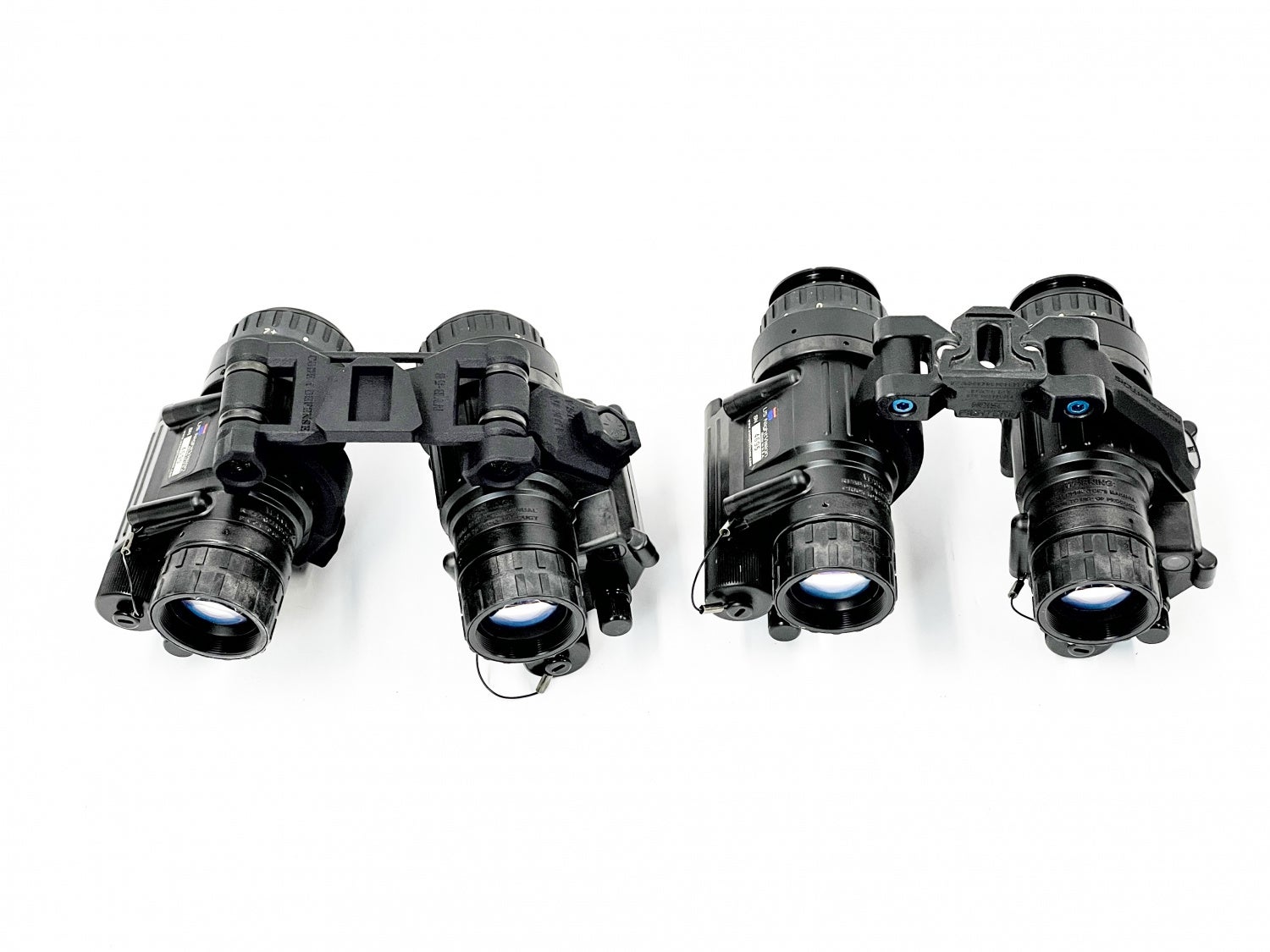
NVB-58 next to Panobridge
While the NVB-58 does not have adjustable FOV, the articulation will put the pods parallel when you roll them up. This is for storage purposes.
If you roll the pods past 90º on the NVB-58, the pods will pigeon toe and have a converging point.
When worn, the Code 4 Defense NVB-58 will give you that sloth-like FAS look.
Roll the pods up and they will straighten out and be parallel.
Here is what the pods look like if you simply fold the mount up and don’t articulate the pods back.
At 90º, the pods are parallel with each other. I like the recessed Old Glory at the bottom of the bridge. It is a nice touch.
You can keep articulating the pods past 90º and the pods will start to pigeon toe and sit closer to your helmet.
One of the many features of the NVB-58 that I like is Jake’s designed it to be toolless. He uses steel hardware and 3D-printed thumb screw wings so you can install the screws and tighten them without the need for any tools or coins.
Another major boon to Code 4 Defense’s design is the use of steel bushings. Now you don’t have polymer compressed onto more polymer to create friction. Also Jake incorporated a lanyard tie downs into the rear of the NVB-58 bridge. You can loop a shock cord or use a lobster claw clasp to grab onto the bridge. It does not quite function for a shock cord on your helmet to minimize jiggle but I never use those anyway. I care more about accidentally dropping my nods than a little head jiggle. “You think a little head jiggle is supposed to make me happy, hmm?” (Princess Bride, 1987)
Another design feature that might be overlooked at first glance is how the arms fit on the PVS-14 or compatible monoculars. They have to be pressed down to fit onto the monoculars. When held captive with the mounting screw there is positive pressure on the arm and monocular. This helps keep the monoculars in position. Some other designs do not have this constant pressure and it is too easy to rotate the monocular around the mounting screw.
See how wide the arm is for the NVB-58? That is all friction touching the monocular housing helping it to stay in position and not shift.
NVB-40
As mentioned earlier, Code 4 Defense provides a set of parallel arms so these can switch between regular 40º FOV or 58º FOV.
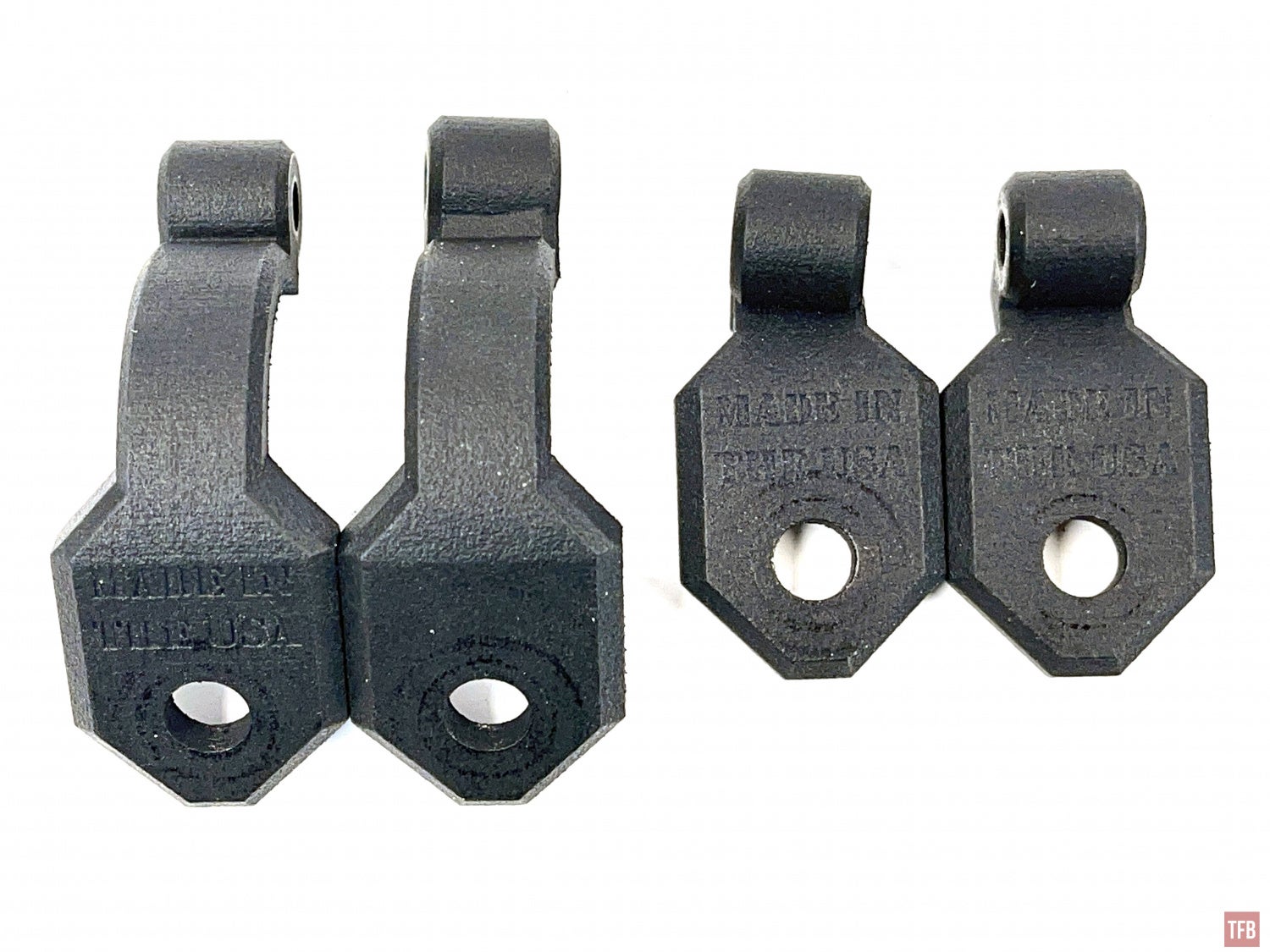
It is subtle but the two arms in the middle are the 58º FOV arms while the ones on either side are the parallel arms.
NVA-14
If you don’t have two PVS-14s, you can get Code 4 Defense’s night vision arm, the NVA-14. It is almost like half an NVB-58 but it has dual dovetails. The NVA-14 uses the same hardware and arm as the parallel NVB-40.
The NVA-14 uses a double inverted dovetail to switch from the right to the left eye. You remove the arm from your dovetail mount, flip the arm over and dock it back into your mount.
Since the NVA-14 is an articulating arm, you can store the PVS-14, or compatible monoculars, like the NVB-40.
Articulating arms for the PVS-14 is great. It is easier to adjust them for different faces but when you flip them up you don’t have your monocular sticking out a few inches like a unicorn horn. Articulating it brings the device closer to your helmet reducing leverage and strain on your forehead.
Final Thoughts On The Code 4 Defense Night Vision Arm And Bridge
First of all, the price is what makes these two offerings very attractive. The NVA-14 is $99.99 and the NVB-58 is just $199.99. While the NVB-58 does not have adjustable FOV without swapping parts, it works well and is at a very attractive price point. Both designs are simple and feel robust. You can adjust the tension of the arms as well as install or remove the PVS-14s without the need for tools.
Jake told me that he is working on generation 2 of his design. He plans to have IPD stops as well as retain the mounting screws. At the moment the screws are not retained so if you remove the PVS-14s the screws are just loose. Even with that minor inconvenience, I think the NVB-58 or NVA-14 are worth a look.
For more information check out Code 4 Defense’s website.


